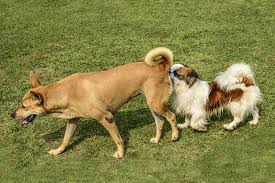
What Colour dog collar is best? For a cool-toned dog (like a blue merle, black, or a silvery-blue dog), choose a warm-toned collar such as orange, fuschia, or red. If you have a dark dog, choose a lighter collar. If you have a light-colored dog, go with a darker collar. If you have a black or white dog, nearly any color looks nice with their coat.
What does it mean when a dog wears a red collar? “Red is the signal that this pet is aggressive and needs space from both people and other animals,” explains Dr. Brian Evans, veterinarian and medical director of virtual vet care company Dutch. “These are pets that have been known to snap or bite at passersby, attack other dogs, or lunge at people.
What do the different colored collars mean for dogs? Green – The dog has a friendly nature, and it’s okay to get close alone or with any animal. Blue – The dog is a service animal. It’s training or working, so don’t disturb it. White – The dog has difficulty hearing or seeing, or is completely blind/deaf. Purple – Don’t feed anything to the dog.
Are dog chokers cruel? Choke and prong collars are designed to punish dogs for pulling by inflicting pain and discomfort. They can cause serious physical and emotional damage to dogs and should never be used.